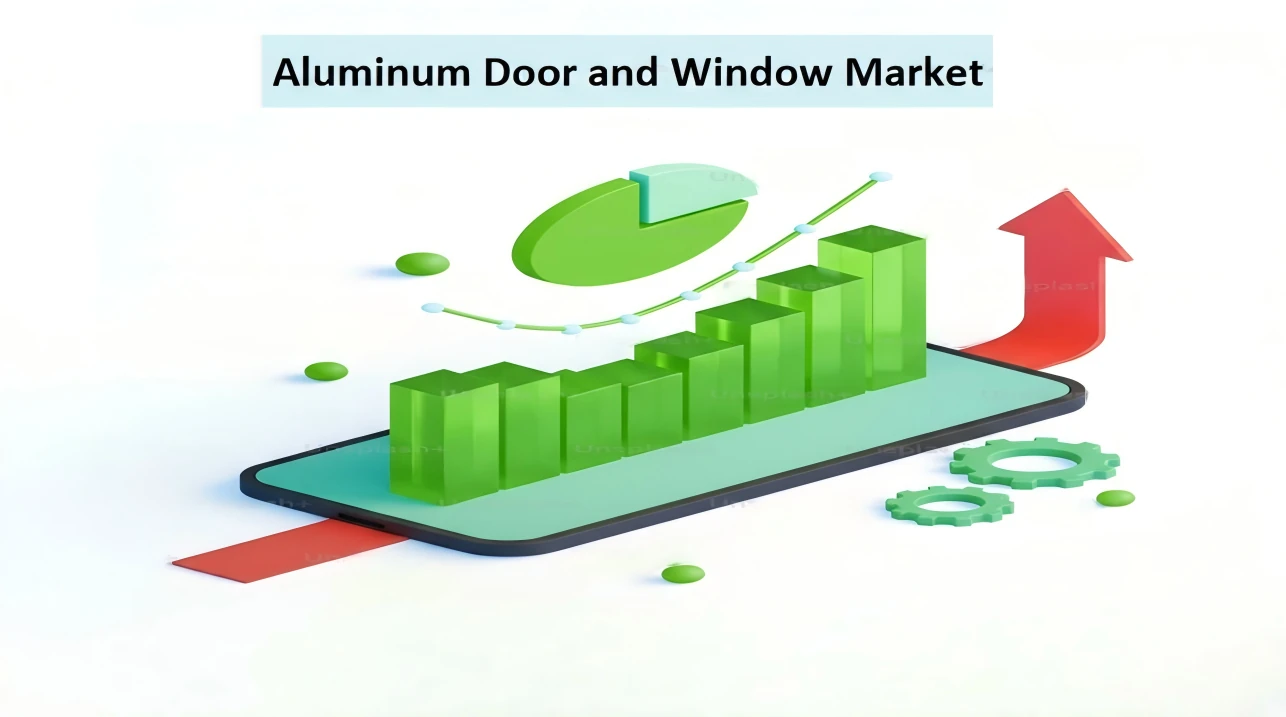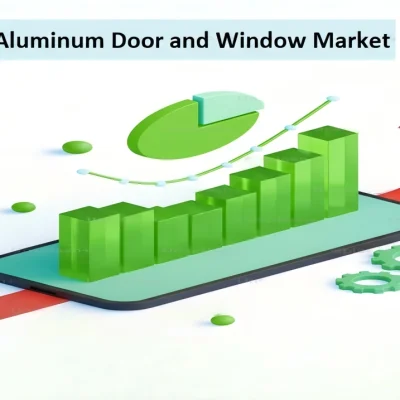Aluminum Windows and Doors Market Size, Share & Forecast 2025–2030 | Investor Insights

Several authoritative institutions worldwide predict that from 2025 to 2030, the global aluminum windows and doors market will experience a period of rapid growth. The main reasons are urbanization, sustainability requirements, and new design trends. Due to its durability, energy efficiency, and fashionability, aluminum has become the preferred material for modern windows. From residential construction and renovation to commercial building projects, the market demand in North America, Europe, the Asia-Pacific region, and the Middle East is growing rapidly.
In this article, we explore the key trends, growth drivers, regional insights, and future opportunities in the aluminum windows and doors industry. Whether you are an owner considering home upgrades, a developer planning large-scale projects, or an investor monitoring market changes, understanding these dynamics will help you make informed decisions.

I. Current Market: Growth Is a Given—But the “Why” Matters
First, let’s cut through the data noise. Everyone agrees the aluminum windows and doors market is growing; the only debate is how fast. Here’s the key context:
- Back in 2021, the global market hit $55.8 billion. Some analysts say it’ll reach $82.1 billion by 2031 (that’s a 3.8% yearly growth rate), while others see it hitting $71.58 billion as soon as 2025 (a faster 6.4% clip). The optimists even think it could top $91.73 billion by 2029.
- Why the difference? The 3.8% rate reflects slow-and-steady growth in mature markets (think Europe, North America), where most demand comes from replacing old windows. The 6.4% jump? That’s emerging markets—Asia-Pacific, parts of Africa—building new homes and offices like crazy.
- Production tells the same story:Aluminum’s not going anywhere here—it’s light, strong, and easy to mass-produce, which is why builders can’t afford to swap it out.

II. 2025-2030 Forecast: Three Trends You Can’t Ignore
1.Emerging Markets Will Pull the Weight
Europe and North America will trudge along, growing at ~3.8% thanks to old window replacements. But Asia-Pacific? It’ll zoom past 6% growth. India’s urban population alone is set to hit 40% by 2030—all those new city dwellers need homes, and homes need aluminum windows.
2.3.8%-6.4% Growth Is “Safe”—But ESG Makes It Better
That growth range sounds ho-hum, but it’s reliable for a materials market. And if you focus on companies with ESG angles—like using recycled aluminum or making energy-efficient windows—you can boost profits. These firms often win government contracts or get premium prices from eco-conscious buyers.
3.Stop Chasing Size—Chase High Margins
- Custom windows for luxury homes: These can cost 30% more than standard ones, and wealthy buyers don’t blink at the price.
- Smart windows: Right now, less than 5% of homes have them, but they’re a selling point for high-end buildings (think remote control, built-in sensors).
- Low-carbon aluminum windows: Governments and green funds love these—they’re made with recycled metal or cleaner production methods.
III. Market Segments: Where to Focus Your Cash
Not all parts of the market are equal. Here’s how to pick the right lane:
By Product Type
- Windows vs. Doors: Windows make up over 60% of sales (sliding windows are the most popular for saving space). But doors? The big, fancy ones—like pivot doors for luxury hotels—have profit margins 20-40% higher than regular doors.
- Window Profiles: These are the “bones” of windows. They grow slower (5.31% a year through 2031) but are steady. Good for investors who hate risk—success here is all about making profiles cheaply and with good quality (no wonky shapes from bad extrusion).
By Use Case
- Residential: As the middle class grows, people want better windows. In India or Vietnam, that means new builds; in Germany or Canada, it means replacing 20-year-old 塑钢 windows with aluminum ones.
- Commercial: Airports, malls, and skyscrapers need heavy-duty aluminum systems—like curtain walls (the glass exteriors you see on office towers). These use 3-5 times more aluminum than regular windows, and contracts are huge. But you need tech know-how to win them.
- New Builds vs. Renovations: If you’re looking at emerging markets, pick companies that make cheap, standard windows for new homes. For mature markets, go with firms that specialize in energy-efficient replacements (they’ll cash in on government rules).

IV. Regional Playbook: One Size Doesn’t Fit All
Every region has its own rules. Here’s how to play it:
| Region | What’s Driving Demand? | Who to Invest In? |
|---|---|---|
| Asia-Pacific | Cities are growing fast—need cheap, durable windows | Companies with local factories and ties to big developers (think China, India). |
| Europe & North America | Governments force energy savings; old windows need replacing | Firms that make “thermal break” windows or use recycled aluminum. Bonus points if they offer installation too. |
| Middle East & Africa | Dubai needs luxury windows; Africa needs cheap basics | For the Middle East: Companies that make heat-resistant windows for villas. For Africa: Firms working with local distributors (avoids tariff headaches). |
| Latin America | Governments are building more homes; tariffs are tricky | Companies with factories in the region (no import fees) or partnerships with local governments. |
V. What’s Pushing Growth? Five Big Drivers
The market isn’t growing by accident—these trends are fueling it:
- Cities Are Getting Bigger: By 2030, 60% of people will live in cities. That means more apartments, more offices, more aluminum windows. Firms in India or Vietnam (fast-urbanizing countries) will benefit most.
- Energy Rules Are Tighter: The EU wants all new buildings to be “near-zero energy” by 2030. That means old aluminum windows (which leak heat) are out—new ones with “warm-edge spacers” or Low-E glass are in. Companies that already make these will win.
- People Want Fancy Design: Architects love big glass walls and slim window frames. To make these, you need custom aluminum profiles. Firms that can work with architects (not just make generic parts) will charge more.
- Sustainability Sells: Aluminum can be recycled 100 times, and making recycled aluminum uses 95% less energy. Firms that shout about this get green fund money and government contracts.
- Smart Homes Are Catching On: Imagine a window that closes automatically when it rains. These are still rare, but by 2030, they’ll be standard in nice homes. Firms partnering with IoT companies (think smart home apps) will lead here.

VI. What to Watch Out For: Five Risks
It’s not all smooth sailing—here’s what can trip you up:
- Aluminum Prices Go Up and Down: Making aluminum uses a lot of electricity. If gas or power prices spike (like they did in Europe in 2022), aluminum costs jump, and profits drop. Pick firms that lock in aluminum prices with long-term contracts.
- uPVC Is Cheaper: In some markets (like Europe’s budget homes), uPVC windows cost 15-20% less than aluminum. Firms that can make aluminum windows as insulated as uPVC (without raising prices) will survive.
- Shipping and Tariffs Hurt: Aluminum windows are heavy—shipping them from China to the U.S. adds 25% to the cost (thanks to tariffs). Firms with local factories avoid this.
- Certifications Take Time: Europe wants “CE” certification; the U.S. wants “NFRC” labels. If a company can’t get these fast, it misses out on deals. Check if a firm already has the right certifications for its target markets.
- It’s a Capital-Intensive Business: You need big machines to make aluminum profiles. And in mature markets, windows last 20-30 years—so replacement demand is slow. Avoid small firms with tight cash flow.

VII. How to Invest: Five Practical Tips
- Mix Volume and Premium: Get growth from Asia-Pacific (sell lots of cheap windows) and profits from Europe/North America (sell expensive energy-efficient ones). A firm with factories in China and Germany does this well.
- Follow the R&D Money: Look for firms spending on energy-efficient or smart window tech. Check their patent count—more patents mean they’re ahead of the game.
- Don’t Just Sell Windows—Sell Service: Firms that offer installation, maintenance, or window testing make more money. A European company that offers “lifetime maintenance” keeps customers coming back.
- Watch the Margins: If aluminum prices go up but a firm’s gross margin stays steady, it’s good at controlling costs. That’s a sign of a strong management team.
- Avoid Tariff Headaches: In the U.S. or India, pick firms with local factories. No one wants to wait six months for a shipment that gets hit with a 30% tariff.
VIII. Final Thought: This Market Is Changing—Don’t Get Left Behind
aluminum windows and doors used to be a “commodity” business—whoever made the cheapest window won. Now it’s about value: better tech, sustainability, and service. The winners will be firms that adapt to this shift. For investors, that means looking beyond growth rates and focusing on companies that understand regional needs, follow ESG trends, and can make windows people are willing to pay more for. This isn’t a get-rich-quick market—but it’s a steady one for those who do their homework.
